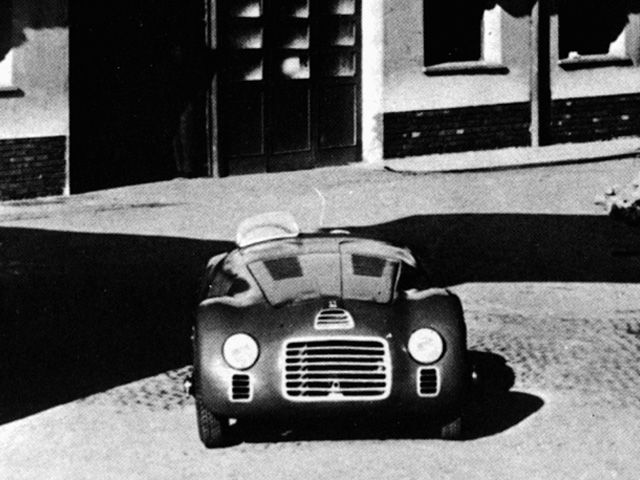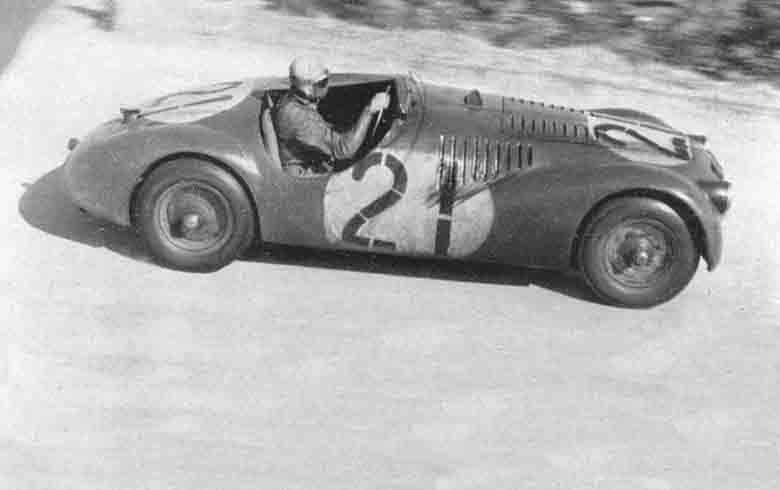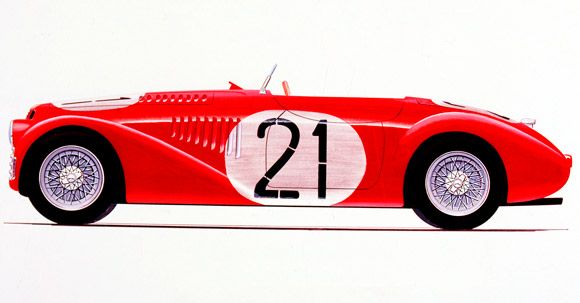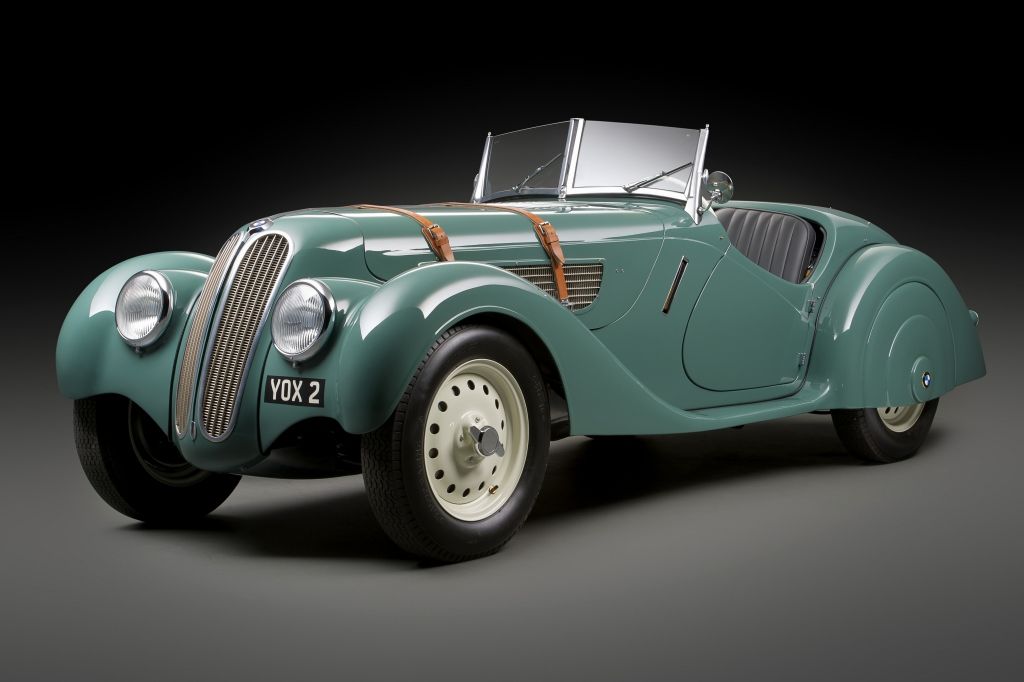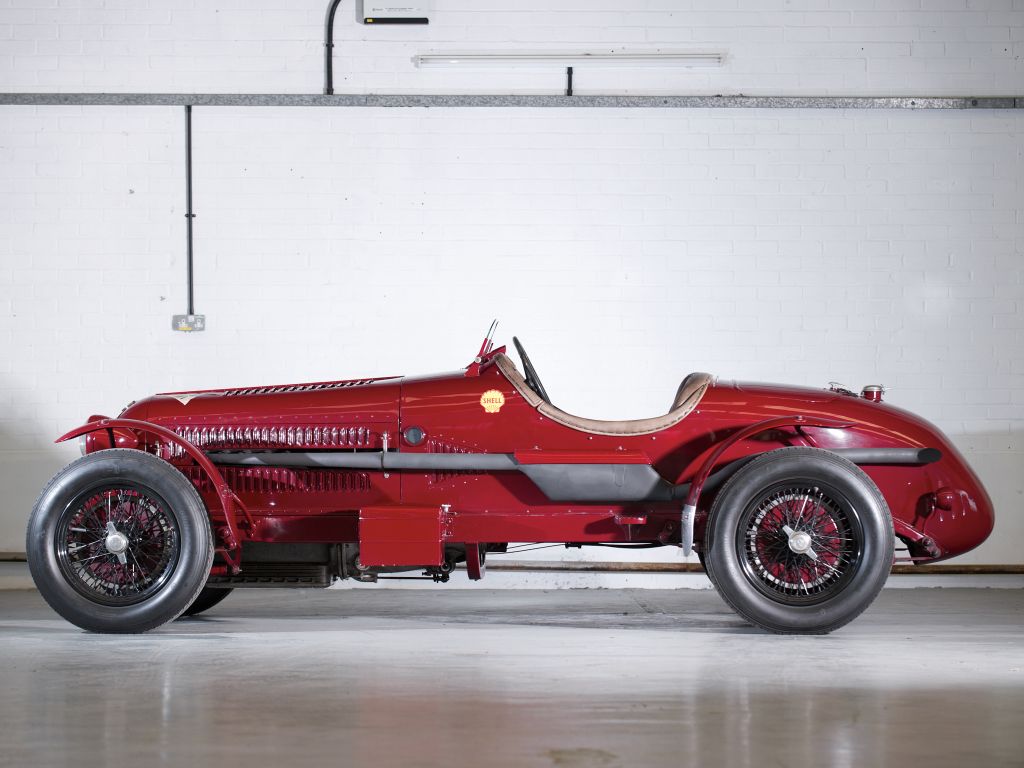The late '40s were something of a mad scramble for European race car->ke148 manufacturers. WWII had only just ended and those companies that were able to rebuild quickly would have an advantage on the track, up against the prewar models being run by their competitors. For Ferrari,->ke252 this problem took a slightly different form. Since the company had existed only as a racing team up to this point, it wasn't looking to rebuild, but rather just to build. The company had no previous models to use as a jumping off point, so the first several chassis were just prototypes, having changes made as needed, and even undergoing model name changes.
What it was exactly that happened to which chassis is the matter of some debate, but what we can say is that the first car built was the 125 S, and this was in turn followed by the 159 S, of which apparently two existed. After the 159 S came the 166 S, and Ferrari actually stuck with this version of the car long enough to build a few dozen of them, including actual road-specific versions with roofs and everything. The 159 S was essentially an evolutionary step on the way to the 166.->ke3510
Continue reading to learn more about the Ferrari 159 S.
1947 Ferrari 159 S
- Make: Array
- Model: 1947 Ferrari 159 S
- [do not use] Vehicle Model: Array
Exterior
The 159 S is about as close to a single-seat grand prix car of the day as a road car could be. There are two seats, a bit of windshield and bicycle fenders over the wheels, but it the cigar-shaped body is otherwise without adornment. The car was really only technically road legal though, it was built entirely for racing purposes, and this is why Ferrari didn't feel any particular need to include such features as doors. Still, for something built purely for function, the big grille and louvered bodywork do look pretty cool.
Interior
For as minimalist as the exterior of the car is, the interior, such as it is, raises the bar. There are two small seats, a steering wheel and nothing else, not even carpet. Everything is bare metal, and the dash isn't even painted. The gauge cluster is dominated by a giant tachometer, a much more important thing to watch than speed in a race car.
Drivetrain
The big difference from the 125 S to the 159 S was the engine. The 125 S had a 1.5-liter V-12, designed by Gioacchino Colombo. For the 159 S, it was bored and stroked up to 1.9 liters. Compressions was lowered when the change was made though, and the engine still breathed through the same 3 Weber carburetors, so power only went from 118 horsepower to 125 horsepower. But this was a lot for a 1.9-liter engine in 1947, and with the car being so light, it was enough to be competitive. The sent its power through a five-speed manual transmission, still something of a technological rarity at the time. As with all Ferraris for at least the next couple of decades after this, the name of the 159 S tells us that it displaced 159cc per cylinder. And since all Ferrari road cars during the period that this naming scheme was in use had 12-cylinder engines, it's always just a bit of multiplication to tell us what the total displacement was. So it's easy to tell that displacement was just bumped up from 1.9 liters to 2.0 liters for the 166, the first Ferrari to built as more than a prototype.
Prices
There is currently only one 159 S in existence, and even its authenticity is disputed. It belongs to Jim Glickenhaus, and was really a 166 Spider Corsa when he acquired it. Ferrari records from the time are a bit iffy, but it is believed that the cars started off as a 125 S, then was converted into a 159 S and then again into a 166 Spider Corsa. Glickenhaus has converted it back into a 159 S and given it a complete restoration. Some have argued that this car never was a 159 S, but it's very probable that it will never be entirely settled. Glickenhaus bought the car in 2004 for $777,500. A hefty sum, to be sure, but it is very probably worth quite a bit more now. What that sum is would be anybody's guess, as the values of one-off cars are just whatever someone is willing to pay, and can vary wildly. Since the 166 now sells for somewhere in excess of $3 million, that would probably be a good place to start.
Competition
Alfa Romeo 6C
The 6C was a prewar model, but was changed quite a few times over the years, in both racing and road going form. It was the chief rival to the early Ferrari racers at both the Targa Florio and the Mille Miglia. It stayed in production in one form or another from 1927 all of the way up to 1954, although there was obviously a bit of a break for the war. It was a highly versatile chassis, and this is how it lasted as long as it did.
BMW 328
The 328 was also a prewar car, but in the early days just after the war, these still made up most of the field in motorsports. And the 328 was quite the formidable prewar car, one of the all time classic BMWs. The 328 won the last running of the Mille Miglia before the war, and was still a potent weapon when the race started back up in 1947. In fact, a 328 even won the 1948 Australian Grand Prix. In 1999 it made the short list of 25 finalists to be named “Car of the Century.”
Conclusion
The 159 S might not have been the finished product that the 166 MM was, but at this point, the car's value is as a classic piece of history and not something built for top tier racing. As such, it is arguably much more interesting than the 166 MM because it is unique. Ferrari built several dozen 166s, but today there is only one 159 S, and it is the oldest Ferrari still in existence. It belongs to Jim Glickenhaus now, but if you're a really determined collector, it might one day be yours.


